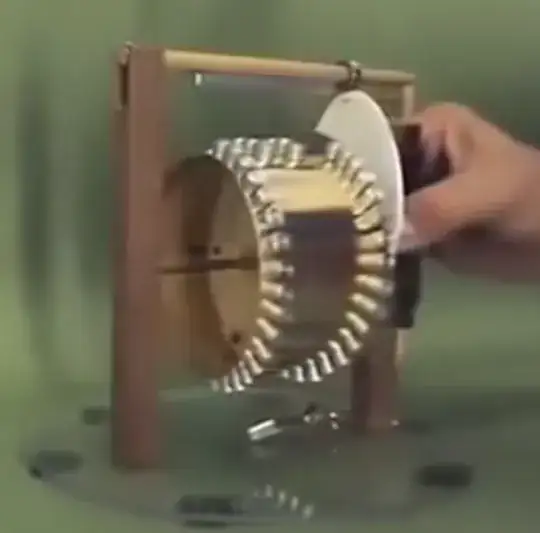The following device is apparently based on magnetic forces only and has no visible energy source:

Where is it's energy source?
Full video: http://www.youtube.com/watch?v=eA0b-8pqUCk
UPDATE
One of suggestions was that energy coming from heavy rod above the setup, which is lifted initially. Unfortunately, this gives us no more than
$mg dh$
of energy, which means that the energy of rotating wheel is no more than that value. Hence, on the next cycle, it will not be able to lift the rod again to the same level, especially regarding of friction, occurring in the rod-lifting mechanism.